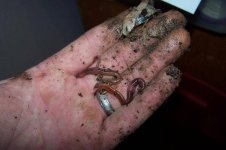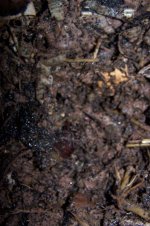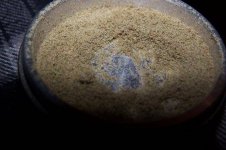stickydank
Member
I ordered some worms from urban naturalist 200+ worms 15$
im not sure if there was 200 but i made a pass through worm bin they are doing great Hope they find each other to mate they are all over the bin looking very happy, and i have my bin it the house no smell i mix the bin every 3 days and mist the bin every day i get liquid out the bottom,lots of air getting to the bed from the bottom 20 gallon tote the bottoms cut of and i set it on a grated 1x1 inch rack i set the totes lid on the floor set the raised grate under the bin and a liquid catching pastic box under the worm bin the worms love it.
I wish i had $$ for a couple of lbs of worms I'll take pics and post when i feel better
im not sure if there was 200 but i made a pass through worm bin they are doing great Hope they find each other to mate they are all over the bin looking very happy, and i have my bin it the house no smell i mix the bin every 3 days and mist the bin every day i get liquid out the bottom,lots of air getting to the bed from the bottom 20 gallon tote the bottoms cut of and i set it on a grated 1x1 inch rack i set the totes lid on the floor set the raised grate under the bin and a liquid catching pastic box under the worm bin the worms love it.
I wish i had $$ for a couple of lbs of worms I'll take pics and post when i feel better





